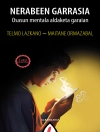This book presents research conducted with children and young people about online harms, with a UK focus, while aiming to stimulate comparative analyses of other countries too. While the chapters vary in how data-driven they are, each will explore conceptualisations of online harm, children and young people’s experiences of online harms, and their perspectives on interventions to educate about and address online harms. While the UK government claimed in 2019 to be introducing ‘tough new measures to make the UK the safest place to be online’, it has been noted that there may be a limited capacity for formal legislation to address the complexities of contemporary digital life for children and young people; instead, tackling online harms has to be part of a broader agenda and must account for the diverse and socially contingent nature of children’s and young people’s experiences online, as evidenced by extensive research undertaken with children and young people.
With the finalisation of legislation surrounding online harms in the UK imminent, the objective of this collection is to shape the implementation of policy in practice settings. To support practice development, the book offers vignette-style pieces that will describe examples of policy and practice models and how these models can support children’s and young people’s active participation in understanding online harms. As a result of this, the findings of this book will minimise the disparity between the practice, policy and research through speaking to the interface between these fields in the UK context.
Tabella dei contenuti
1 Introduction: Children, Young People, and Online Harms – Emily Setty, Faith Gordon, and Emma Nottingham.- Part I Understanding Children’s and Young People’s Experiences of Being Online.- 2 A Real Virtual Self – Rebecca Mace.- 3 Self-Presentation Within Children’s Digital Spaces – Claire Pescott.- 4 A “Post-digital” Continuum of Young People’s Experiences of Online Harms – Emily Setty.- 5 Dark Patterns of Cuteness: Popular Learning App Design as a Risk to Children’s Autonomy – Caroline Stockman and Emma Nottingham.- Part II Responding to Children’s and Young People’s Experiences of Being Online.- 6 Regulating to Minimise Harm to Children and Young People – Lorna Woods.- 7 Age as a Gatekeeper in the UK Online Safety Agenda – Jen Persson.- 8 A Sociotechnical Anthropology of Online Safeguarding – Andy Phippen and Emma Bond.- 9 Practice Vignette: Headstart Kernow’s Digital Resilience Project – Andy Phippen and Louisa Street.- 10 Parental Approaches to Protecting Children from Online Harm: Trust, Protectionism or Dialogue? – Claire Bessant.- 11 The Significance of Digital Siblingship for Children Navigating Online Harms and in Accessing Justice – Faith Gordon.- 12 Pornography Is Not the Answer (It Isn’t Even the Right Question …): Reflections from Practice in Tackling Sexual Harassment and Harmful Sexualised Behaviours in Response to Everyone’s Invited and the Online Safety Bill – Jonny Hunt.-13 Practice Vignette: Relationships and Sex Education for the “Digital Age” – Emilie Cousins.- 14 Conclusion – Emily Setty, Faith Gordon, and Emma Nottingham.
Circa l’autore
Dr Emily Setty is a Senior Lecturer in Criminology at the University of Surrey. Emily is also a Research Fellow at the Institute of Criminal Policy Research, Birkbeck.
Dr Faith Gordon is an Associate Professor in Law and Deputy Associate Dean of Research at the ANU College of Law, The Australian National University.
Dr Emma Nottingham LLB Ph D FHEA is a Senior Lecturer at the University of Winchester. She researches the legal and ethical aspects of children’s rights within a range of contexts.












